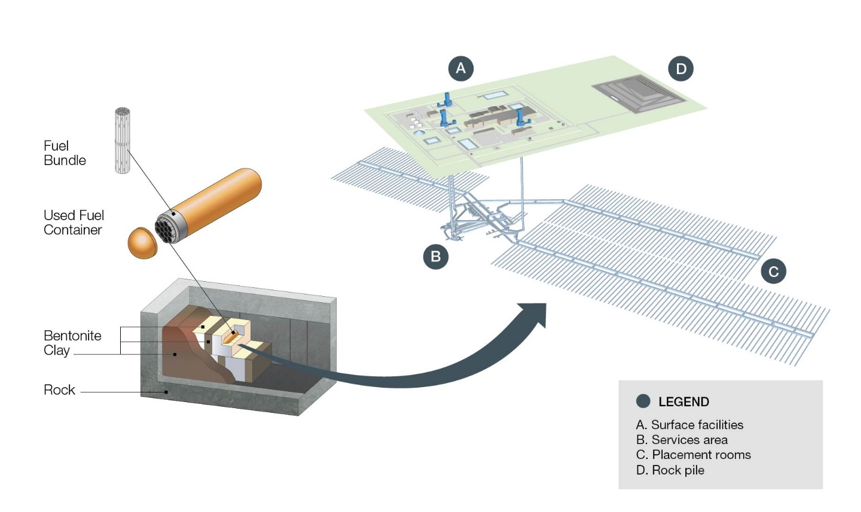Canada’s plan for spent nuclear fuel designed to adapt
This is the final in a series of blogs from the Global Public Affairs webinar Nuclear Power: Part of Canada’s Energy Transition. If you want to learn more from some of Canada’s top nuclear experts, don’t miss the previous blog in this series: When shutting down the world isn’t enough to fight climate change: Why nuclear? Why now? by Marla Orenstein.
BY LISA FRIZZELL | Small modular reactors (SMRs) have been touted as the “next wave of nuclear innovation” by the federal government. And they’ve been called “the next big leap in the fight against climate change” in The Globe and Mail.
These small-scale nuclear reactors have the potential to power communities and businesses large and small across Canada and around the world. The possibility of a long-term solution that would both meet the growing global demand for electricity and help lower greenhouse gas (GHG) emissions is enticing.
Increased access to nuclear energy could help Canada and countries around the world to meet our target of net zero emissions by 2050. But that prospect is often followed by a key question: What about the spent nuclear fuel these SMRs will inevitably produce?
Turns out, we already have an answer; we have Canada’s plan. I work at the Nuclear Waste Management Organization (NWMO), and our job is to implement Canada’s plan for the safe, long-term storage of spent nuclear fuel in a deep geological repository (DGR).
It sounds complicated, and in many ways, it is. The plan is a multigenerational infrastructure project. It requires working with municipalities and Indigenous communities to find an area with willing hosts; it requires the best and most up-to-date science from around the world; and it requires that we constantly adapt to new technologies, such as SMRs.
Yet, Canada’s plan is also simple. In essence, we will bury the spent fuel deep underground – as deep underground as the CN Tower is tall – inside a multiple-barrier system that can withstand ice ages and other natural events. Each layer will serve as a backstop to the previous, so if in the worst case one element of the barrier fails, another is there to keep any remaining radiation safely contained. We have designed it to last many thousands of years to ensure people and the environment are protected for the long-term.
Deep geological repositories are a scientifically sound solution that is considered best practice all around the world, with existing DGRs operating successfully in countries from Scandinavia to Asia.

The NWMO is in charge of building this repository in the coming decades to safely store existing spent nuclear fuel as well as the spent nuclear fuel we will continue to produce when nuclear reactors generate electricity. We are also responsible for any future spent nuclear fuel that is created, including from any SMRs built in Canada.
The fact that SMRs would generate additional spent nuclear fuel is often cited by opponents as a barrier to implementing this technology in Canada. What they don’t take into account is that the NWMO has, from its very outset, sought to be adaptable. The approach we take to implementing Canada’s plan is called Adaptive Phased Management. This is a technical way of saying that our plan is designed to change with the times. Whether it is a new technology like SMRs that will produce more spent nuclear fuel or a technological innovation that will further improve our repository design, we are ready to build new advancements into Canada’s plan through Adaptive Phased Management.
Like so many in the nuclear community, we at the NWMO are keeping an eye on the development of SMR technology and the growing debate over its possible use. Our job is not to advocate for the nuclear industry in Canada or the use of SMRs, but instead to be here and be ready for those changes should they come.

